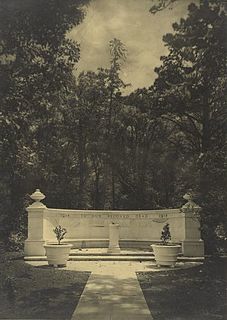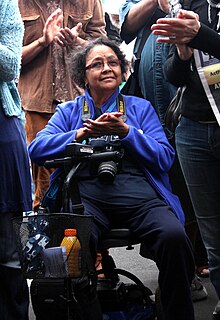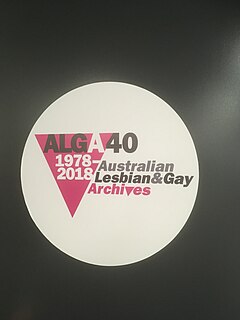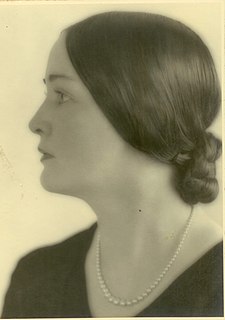Related Research Articles
Chips Mackinolty was involved in the campaigns against the war in Vietnam by producing posters. He was a key figure in the radical poster movement and was introduced to screen printing in Goulburn Street, Sydney.

Harold Cazneaux was an Australian pictorialist photographer; a pioneer whose style had an indelible impact on the development of Australian photographic history. In 1916, he was a founding member of the Pictorialist Sydney Camera Circle. As a regular participator in national and international exhibitions, Cazneaux was unfaltering in his desire to contribute to the discussion about the photography of his times. He created some of the most memorable images of the early twentieth century.
Vivienne Joyce Binns is an Australian artist known for her contribution to the Women's Art Movement in Australia, her engagement with feminism in her artwork, and her active advocacy within community arts. She works predominantly in painting.

Ellen Jose was an Australian indigenous artist and photographer She was a Torres Strait Islander descendant from Murray, Darnley and Horn Islands who lived in Melbourne with husband Joseph Toscano.

Bronwyn Bancroft is an Australian artist, and amongst the first Australian fashion designers invited to show her work in Paris. Born in Tenterfield, New South Wales, and trained in Canberra and Sydney, Bancroft worked as a fashion designer, and is an artist, illustrator, and arts administrator.

Sydney George Ure Smith OBE was an Australian arts publisher, artist and promoter who "did more than any other Australian to publicize Australian art at home and overseas".

The Australian Queer Archives (AQuA) is a community-based non-profit organisation committed to the collection, preservation and celebration of material reflecting the lives and experiences of lesbian, gay, bisexual, transgender and intersex LGBTI Australians. It is located in Melbourne. The Archives was established as an initiative of the 4th National Homosexual Conference, Sydney, August 1978, drawing on the previous work of founding President Graham Carbery. Since its establishment the collection has grown to over 200,000 items, constituting the largest and most significant collection of material relating to LGBT Australians and the largest collection of LGBT material in Australia, and the most prominent research centre for gay, lesbian, bisexual, trans and intersex history in Australia.
Australian feminist art timeline lists exhibitions, artists, artworks and milestones that have contributed to discussion and development of feminist art in Australia. The timeline focuses on the impact of feminism on Australian contemporary art. It was initiated by Daine Singer for The View From Here: 19 Perspectives on Feminism, an exhibition and publishing project held at West Space as part of the 2010 Next Wave Festival.
David McDiarmid (1952–1995) was an artist, designer and political activist, recognised for his prominent and sustained artistic engagement in issues relating to gay male identity and HIV/AIDS. He is also known for his involvement in the gay liberation movement of the early 1970s, when he was the first person arrested at a gay rights protest in Australia, as well as his artistic direction of the Sydney Gay and Lesbian Mardi Gras. From its inception, McDiarmid's art career encompassed, as both subject and inspiration, gay male sexuality, politics and urban subcultures. His creative techniques included: collage, painting, drawing, calligraphy, mosaic, installation, various forms of print-making, sculpture and artist's books. He was a graphic designer, designer and fabric painter for women's and men's fashion, and an artist and creative director for the Sydney Gay and Lesbian Mardi Gras street parades.
Ruth Maddison is an Australian photographer born in 1945. She started photography in the 1970s and continues to make contributions to the Australian visual arts community.
Lip, A Feminist Arts Journal, or just Lip, was an Australian interdisciplinary feminist art journal, published between 1976 and 1984. The magazine was self-published by a feminist collective during the era of the women's liberation movement, and its content included a very wide range of feminist positions and interdisciplinary art forms, in addition to work that connected the local scene to a more international network. The magazine was based in Carlton, Victoria.
Bessie Guthrie (1905–1977) was an Australian designer, publisher, feminist and campaigner for women's and children's rights. She was one of the founders of the Elsie Women's Refuge Night Shelter, the first women’s refuge in Australia.

Margaret Coen was an Australian artist, known for her watercolours, paintings of flowers, landscapes and still life works. Her paintings and personal papers are held in national collections.
Frances Phoenix (1950–2017) was an Australian feminist artist known for needlework and poster designs. Phoenix contributed to the Women's Art Movement groups in both Sydney and Adelaide, as well as multiple community art projects.
Wendy Murray is a visual artist and arts educator, formerly known as Mini Graff. Under his former persona, Murray worked as an urban street poster artist between 2003–2010, working in and around the city's urban fringe. Since 2014, Murray's art expanded into traditional forms of drawing and artist book design, whilst still engaging with social and political issues through poster making. Murray's use of letraset transfers, accompanied with vibrant colours and fluorescent inks, references the work of studios from the 1960s through to the 1980s, including the community-based Earthworks Poster Collective and Redback Graphix. The 2018 collaboration with The Urban Crew, a 17 person collective of socially engaged geographers, planners, political scientists and sociologists, resulted in the Sydney – We Need to Talk! artist book, addressing issues of development, transport congestion, housing affordability and commercialisation of public space.
Toni Robertson is a visual artist, art historian and printmaker from Sydney, Australia. She is known for her poster making and involvement in the Earthworks Poster Collective, which operated out of the "Tin Shed" art workshops at the University of Sydney.
Marie McMahon is an Australian artist known for her paintings, prints, posters, drawings, and design work. Born in Melbourne, she has worked in various communities of Australian Aboriginal people and today works in Sydney, Australia. Her work has focused on social, political, and environmental issues. Her posters about Aboriginal rights and Aboriginal life appear in major gallery collections in Australia.
Australian poster collectives were established in the late 1960s, 70s and 80s mainly in Sydney, Melbourne and Adelaide, but also in other Australian capital cities. The collectives were formed by artists concerned with social justice, women's rights, political activism, anti-Vietnam war protest, environmentalism, LGBT rights and Indigenous peoples' rights. Collectives also made posters for concerts, bands, marches and community groups. Feminists were active in the collectives and some were women-only collectives. The list of collectives and artists in this article indicates women were leaders in the poster collective movement, establishing groups, providing training, opening the groups up to other women and decision-making by consensus. The collectives were considered to be democratic art movements outside the gallery systems, able to quickly reflect changing social and political views and challenge social norms by designing, printing and displaying posters in public areas. Some artists were members of more than one collective and often did not sign their name to posters but attributed them to the collective. Similar collectives emerged in the UK, Europe, the US and Cuba during that time. This article covers Australian poster collectives from the 60s to 80s rather than later collectives from the 1990s such as RedPlanet.
Alice Hinton-Bateup is an Australian artist and print-maker. In the 1980s she was active in Garage Graphics, a print workshop in Mt. Druitt, Sydney, which included a number of Aboriginal artists. They produced posters that became important in the struggle for Aboriginal rights in Australia.
The Women's Domestic Needlework Group was established in 1976 by Australian feminist artists Marie McMahon and Frances Phoenix, members of the Sydney branch of the Women's Art Movement, with an interest in reclaiming and focusing attention on the undervalued field of women's traditional craft work. The other members of the collective were Joan Grounds, Bernadette Krone, Kathy Letray, Patricia McDonald, Noela Taylor and Loretta Vieceli.
References
- ↑ Commercial journal and advertiser., W Jones, 1835–1840, ISSN 1440-1894
- ↑ "EARTHWORKS POSTER COLLECTIVE". CENTRE FOR AUSTRALIAN ART Australian Prints + Printmaking. Retrieved 4 November 2017.
- 1 2 3 4 Museum of Applied Arts & Sciences. "Poster, 'Dance Black Lace', printed by Earthworks Poster Collective". Museum of Applied Arts & Sciences, Australia. Retrieved 4 November 2017.
- ↑ "Dissenting Doilies: The women's domestic needlework group". New England Regional Art Museum. Retrieved 13 March 2022.
- ↑ "Toni Robertson. Taking Markettown by Strategy". ARt Gallery of NSW. Retrieved 4 November 2017.